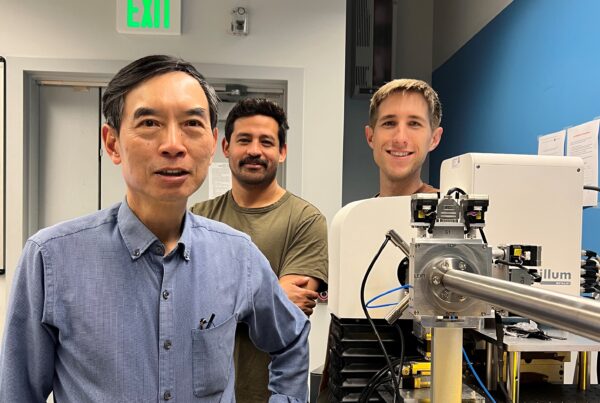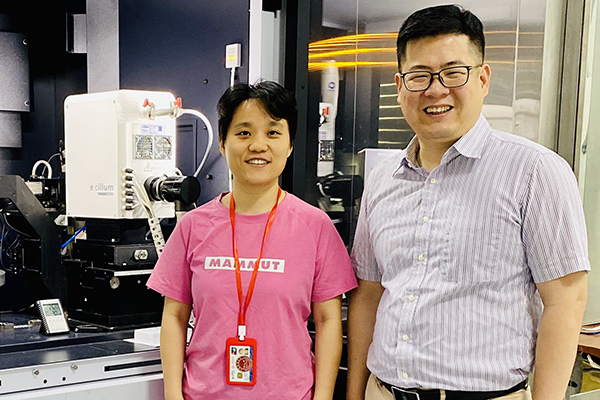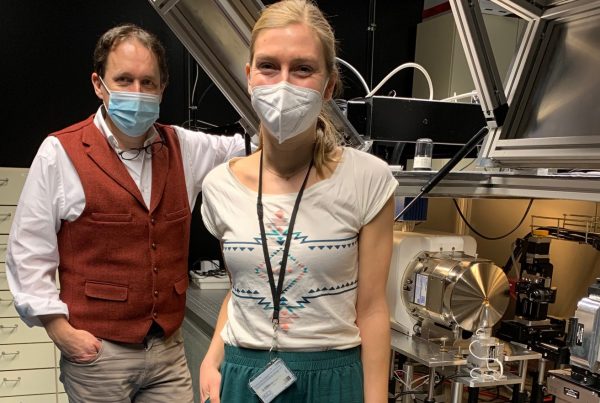Challenges in small molecule crystallography
Some of the biggest challenges in small molecule crystallography measurements are when the crystal is too small or too thin or if the crystals are heavily twined and not well diffracting. In these cases, using a conventional X-ray source would be very difficult, time consuming or even impossible.
The option then could be to use a diffractometer equipped with a MetalJet X-ray source and a hybrid photon counting detector.
Lead Researcher
Dr. Alessandro Prescimone
Institute
University of Basel, Switzerland
Method
Small molecule crystallography
X-ray sources
Excillum MetalJet D2+
If the data collection is not successful with the conventional X-ray diffractometer, I run the test again with the high intensity MetalJet and PILATUS combination to get much better quality data.
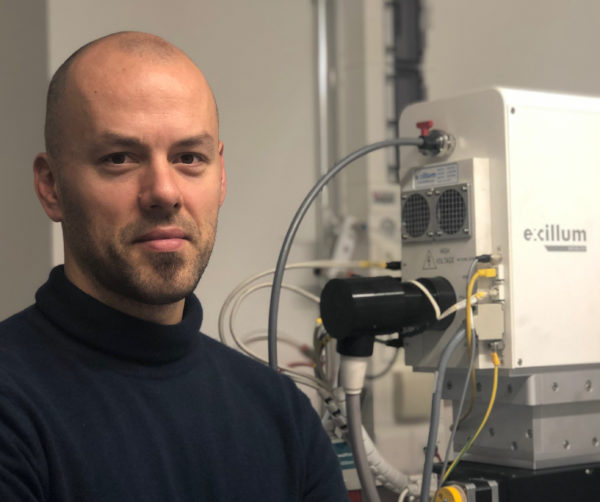
Dr. Alessandro Prescimone
University of Basel
We meet Dr. Alessandro Prescimone, or Alex as he prefers, at the crystallography lab in the Chemistry Department at University of Basel, where he has taken over as lab manager since the former lab manager Dr. Markus Neuburger moved to Ukraine last year. Alex joined this lab in 2014 after he had spent the last 8 years at University of Edinburgh, Chemistry Department and CSEC (Centre for Science at Extreme Conditions), where he had focused on high pressure magnetism and crystallography.
The lab is equipped with one powder diffractometer and two single crystal diffractometers, one of them equipped with the MetalJet X-ray source and the PILATUS 300K detector. The lab mainly serves the chemistry department at the university and occasionally some local pharmaceutical companies that either don’t have their own lab or if they do, they want the advantage of this powerful diffractometer. Sometimes he gets to introduce and train some students, thus passing on basic knowledge about operations of the lab and the instruments.
When Alex joined the lab, the MetalJet diffractometer was already ordered and on its way to be installed. The department management had been in contact with a professor at a university in Karlsruhe, Germany who recommended the MetalJet, and that way got to know about the unique features. Dr. Neuburger then got convinced that the STOE Stadivari, equipped with MetalJet and PILATUS, was the right choice for the lab.
Service Lab
The Service Lab at the Chemistry Department measures small molecule crystals, the size of the crystals down to about 50 μm, up to 200 samples per year. According to Alex the capacity for the lab is a delicate balance between data collection time and data processing time, where the two needs to be considered as well as the size and composition of the crystal. He has developed a good knowledge and experience to know which samples should be measured where to optimize the resources.
The reason the MetalJet is a suitable choice for service labs is the high throughput capacity which enables both more samples to be measured and higher quality data, accepting more challenging samples in comparison with a conventional X-ray source.
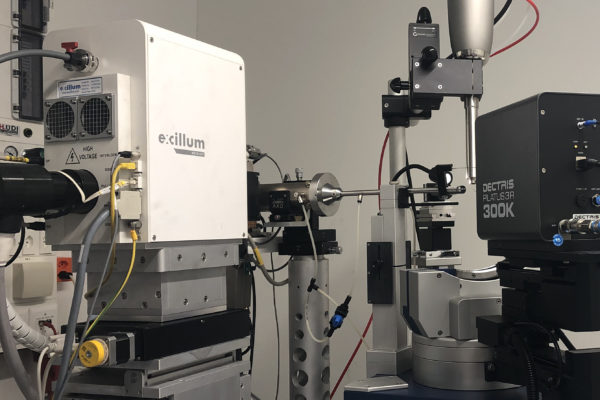
A measurement that would take 3 days with a conventional diffractometer and in the end not even able to achieve publishable data, only takes about 10 hours with the MetalJet – PILATUS combination, obtaining high quality data, even at the high angle.
“I almost gave up on crystallography altogether!”
Alex started out with synthetic inorganic chemistry at the University in Pisa. He found the crystallography lectures both tedious and very theoretical in the beginning, before he finally got a chance to see the instruments in the lab, something that almost caused him to lose interest in crystallography. Today he can use this experience when introducing new students to the lab.
I believe that it is important to introduce students to the lab equipment early on, so they don’t lose interest and instead realize how fun it could be!
Something that he would find interesting is the possibility to replace the Gallium alloy in the MetalJet with Indium alloy, which would make it suitable also to run high pressure measurements. Unfortunately, the current demand on high pressure measurements at the lab is not enough to justify such a replacement at the moment, even though it is technically possible. Whenever he wants to measure at high pressure, he brings the samples to the Diamond Light Source in Oxfordshire, UK.
It would be really interesting to know if others have used the Indium alloy with the MetalJet for high pressure measurements, if they have had any interesting results and maybe in the future I will get a chance to try it myself,
Alex concludes.
To read more about the work at University of Basel: CrystEngComm, 2017, 19, 2894-2902, Y. M. Klein, A. Prescimone, M. Neuburger, E. C. Constable, C. E. Housecroft

